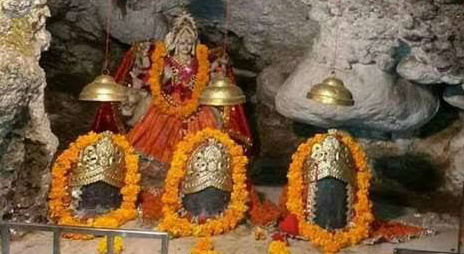Sringeri Temple
Introduction-
Sri Sringagiri Maṭha is one amongst the four cardinal
pithams following the Dasanami Sampradaya - the peetham or matha is said to
have been established by acharya Sri Adi Shankaracharya (Adi Shankara, also called Adi Shankaracharya was an 8th-century Indian
Vedic scholar and teacher. His works are a beautiful blend of the shastras,
with liberating knowledge of the self at its core, synthesizing the Advaita
Vedanta teachings of his time. His hagiographies(writings on the lives of
saints) portray him as founding four mathas (monasteries).One of his matha Sringeri
matha started to receive patronage from the kings of the Vijayanagara Empire
after his death) to preserve and propagate Sanatana Dharma and Advaita Vedanta,
the doctrine of non-dualism. Located in Sringeri in Chikmagalur
district in Karnataka, India, it is the southernmost among all the four
pithams.
Structure-
The Sringeri matha includes two major temples. One is
dedicated to Shiva and is called the Vidya Shankara temple, the other to
Saraswati and is called the Sharada Amba temple.
The Shiva temple has an unusual appearance as it is a
fusion of pre-Vijayanagara Hindu temple architecture traditions with Hoysalas
and Vijayanagara styles. The temple is set at a high plinth like the Hoysalas
temple, with the basement made of beautiful stone art work of animals and
railings supported by short columns, going round side the steps. The
temple can be entered from four directions, inside the temple is a greatly
sized complex made of carved pillars, several antechambers with artwork, a
sanctum with linga and a circumambulation passageway around it, this passageway
further opens to smaller shrines dedicated to Hindu gods and goddesses from
various Hindu traditions.
Vidyashankara Temple in Sringeri has 12 pillars on
which Solar Signs are made. Every morning when Sun rays enter, they hit one
specific pillar indicating the month of the year. Vidyashankara Temple in
Sringeri has 12 pillars on which Solar Signs are made. They are constructed in
such an ingenious way that the rays of the sun fall on each pillar in the
chronological order of the twelve months of the Hindu calendar. Each column is
topped by a Yali with a rolling stone ball in its mouth. To my amaze how can
they be so specific about the rashi’s, about the graha’s and the numerical
calculations is a big question for today’s educational system.
Saraswati, the goddess of knowledge and arts in the
Hindu tradition, is the presiding deity of the monastery. The monastery
tradition states that Adi Shankara installed a sandalwood image of Saraswati as
Saradamba in a simple shrine, one that was replaced with its current copy in
gold during the Vijayanagara era. The temple has a main hall with images of
saptamatrikas (seven mothers) sculpted. The goddess sits in a golden chariot.
Along with Saraswati, the temple has small shrines for Ganesha and for
Bhuvaneshvari.
The Saradambda temple and nearby structures
additionally house a library, a Vedic school, a shrine for Adi Shankara, and
other facilities of the monastery. The temple also gives the site its name,
with "Sarada peetha" meaning "seat of learning".
“Just as in this body, the embodied one passes through
boyhood, youth, and old age, so does one pass into another body. With reference
to this (birth, aging and death), the wise man is not disturbed.”
-------Bhagavan Sri Krishna on Significance of God








Comments
Post a Comment